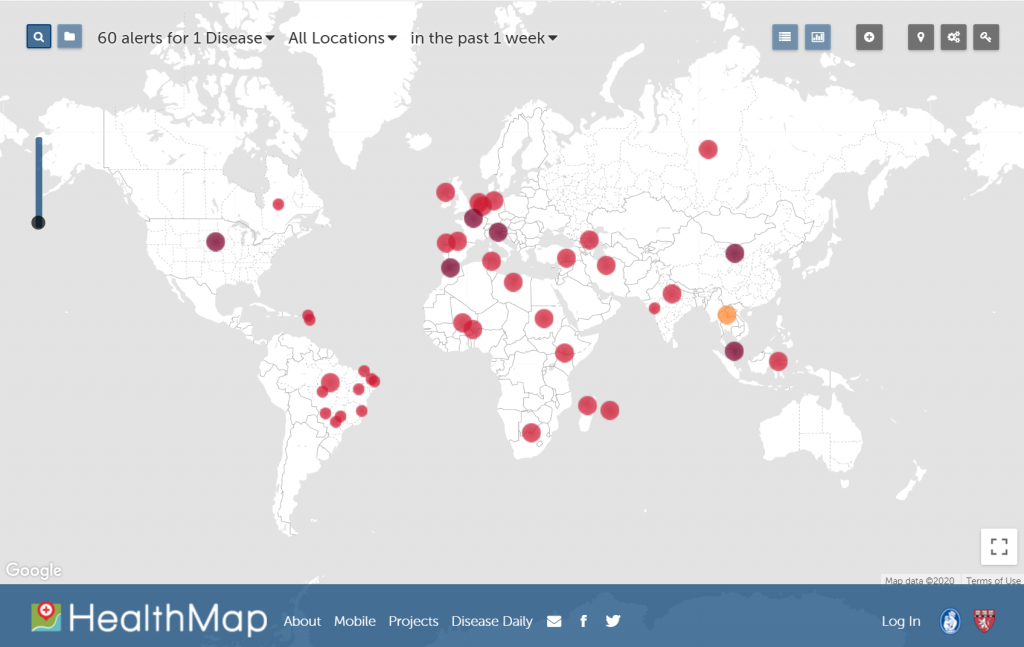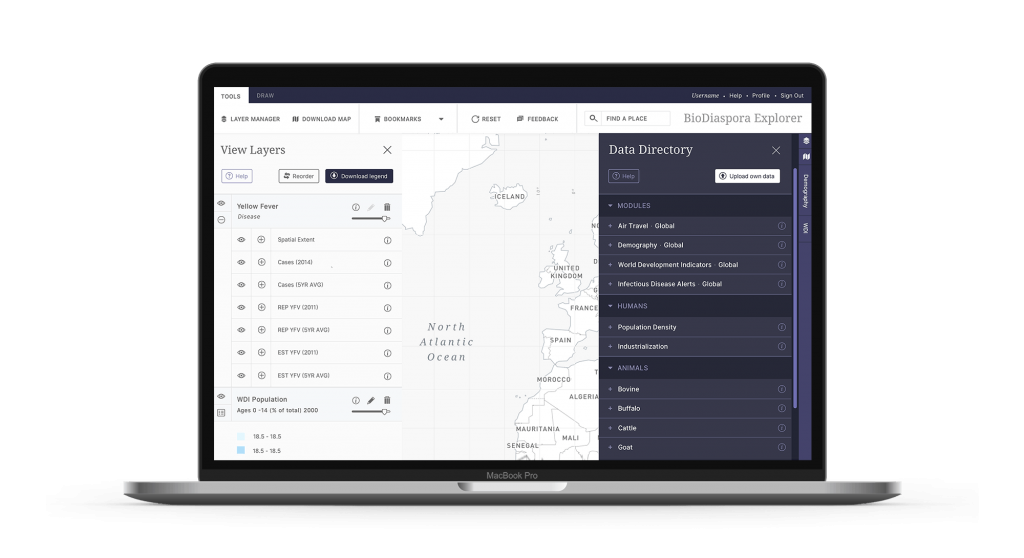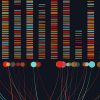Outsmarting global killers: COVID-19 fuels new research on artificial intelligence in healthcare
New AI approaches can lead to better understanding – and treatment – of serious diseases
As COVID-19 ravaged country after country, there wasn’t much optimistic news in the daily reports. Lost amid the rising fear and political finger-pointing was the fact that artificial intelligence (AI) had played a major role in quickly predicting how serious and widespread the pandemic might be, as well as the development of at least two AI-powered projects that could help curb its overall effects on the world’s population.
Researchers have traced healthcare-related AI as far back as a Stanford University project in 1972, and it has been touted as a “game changer” many times in the intervening years. Could this pandemic be the springboard AI needs to truly change the way we track and treat disease?
Early detection
The first handful of cases of what would become known as COVID-19 turned up at medical facilities in Wuhan City, China, in mid-December, 2019. Within two weeks, AI systems in Boston and Toronto were sounding the alert of what was to come.
Built by a team of researchers, epidemiologists and software developers at Boston Children’s Hospital, HealthMap aggregates data from about a dozen sources, including the World Health Organization, Google News and the Wildlife Data Integration Network, and delivers real-time intelligence on a broad range of emerging infectious diseases. By bringing together disparate data sources, including online news aggregators, eyewitness reports, expert-curated discussions and validated official reports, HealthMap is able to achieve a comprehensive view of the current global state of infectious diseases and their effect on human and animal health.

Another AI-based detection system, operated by BlueDot—a six-year-old health monitoring company in Toronto—picked up the outbreak a day after HealthMap, and used a proprietary approach to provide a frightening perspective on how the disease would spread. In addition to applying algorithms to foreign-language news reports, animal and plant disease networks, and official proclamations, BlueDot analyzes global airline ticketing data to predict where and when infected residents are headed next. BlueDot correctly predicted that the virus would jump from Wuhan to Bangkok, Seoul, Taipei and Tokyo in the days following its initial appearance. Founded by Kamran Khan, who worked as an infectious disease specialist during the 2003 SARS outbreak, BlueDot distinguishes itself for its clear-eyed view of the interaction of geo-politics and public policy. As Khan told Wired magazine: “We know that governments may not be relied upon to provide information in a timely fashion.”

Mapping the damage
Other data analysis companies provide additional approaches to detecting disease spread. For example, San Francisco-based Metabiota uses its AI in its Epidemic Tracker software to predict the extent to which infectious diseases pose economic threats to businesses and governments. Another Bay Area company, Kinsa, analyzes real-time health data to provide early detection of infectious diseases and produce predictive models.
The clarity and scientific rigor that predictive modelling leant to statements by elected leaders and senior bureaucrats during the rise of the COVID-19 crisis could well be a turning point for how much faith we put in healthcare AI.
Even before COVID-19 had peaked in North America, one new AI-based application—COVID-Net, a joint venture of the University of Waterloo’s Vision and Image Processing Lab and DarwinAI—was making news for its success at detecting coronavirus from chest x-rays, as well as the unique way it was launched. Founding researchers Linda Wang and Alexander Wong admitted that their software was far from being ready for commercial release, but they launched it as an open source product in the hopes that its use in the heat of the pandemic would supercharge the collection of data that could add significantly to the AI’s training.

Another AI project focused on COVID-19 made news in late March, a juncture when some 750,000 cases had been identified. A report in the journal Computers, Materials & Continua outlined an AI tool that had accurately predicted which patients newly infected with COVID-19 would go on to develop Acute Respiratory Distress Syndrome (ARDS), the fluid build-up in the lungs that can lead to death. Using data collected from 53 Chinese patients who tested positive for COVID-19 in January, a research team led by the NYU Grossman School of Medicine and the Courant Institute of Mathematical Studies at New York University, in partnership with China’s Wenzhou Central Hospital and Cangnan People’s Hospital, were able to achieve an 80 percent success rate at predicting risk of ARDS. As noted in Health Analytics: “The study demonstrates the ability for AI and predictive analytics to augment and support clinicians, especially in the midst of a global health crisis…. The advent of AI in healthcare has opened up new possibilities for tracking and monitoring the pandemic, which could help improve outcomes and clinical care responses.”
Vital transformation
COVID-19 arrived at an interesting juncture in the evolution of health-related AI. In a report published in 2017, London-based PwC predicted that we are entering an era of “New Health,” at the heart of which would be the emergence and increasing use of AI and robotics. As rationale, the report cited the convergence of five distinct trends:
- The “value challenge” that all countries face due to aging population, long-term chronic disease and rising healthcare costs
- The amount of healthcare data, particularly unstructured data, now available to us
- The confluence of technology-based products, platforms and solutions that is leading to previously unimagined “precision medicine”
- The explosion of technology—digitally enabled, wireless connectivity across increasingly mobile devices—and the related democratization of access for healthcare
- The willingness of the general public to be more active in their own health and wellness
The report concluded: “Innovation from AI and robotics lies at the core of our ability to redefine how we deliver healthcare to our citizens. Digitally enabled care is no longer a nice-to-have, but a fundamental imperative for governments and business to reinvent how healthcare is accessed and delivered. This is creating unprecedented opportunities to transform what has been the provision of healthcare that is traditionally focused on the clinician, the hospital, their legacy infrastructure, and incentives to maintain the status quo. AI and robotics are the next wave in this transformation.”
AI moves to the foreground
One significant sign that the tide was turning came last summer, when a German study of 679 patients with 105 different rare diseases proved that AI can be used to diagnose rare diseases more efficiently and reliably. Researchers from the University of Bonn and the Charité–Universitätsmedizin Berlin trained the neural network named DeepGestalt to use facial recognition to identify genetic pre-disposition for diseases like Noonan’s syndrome that affect the appearance of the face. Quoted in Science Daily, Dr. Christine Mundios, deputy director of the Alliance of Patients with Chronic Rare Diseases said: “‘Patients want a prompt and accurate diagnosis. Artificial intelligence supports physicians and scientists in shortening the journey.’”

A second 2019 study—conducted by the University Hospitals Birmingham NHS Foundation Trust—showed results with even broader implications. Published in The Lancet Digital Health, the study found that AI matched the ability of healthcare professionals to diagnose disease based on medical imaging.
If COVID-19 reminded us of any one lesson that could have been carried forward from the SARS outbreak it’s the fragility of the human component of the healthcare continuum. During an unrelenting outbreak, medical personnel can become overwhelmed, burned out, or infected. AI has the potential to alleviate some of that strain on our detection and treatment capabilities.
That’s the goal of a new research consortium jointly managed by the University of California at Berkeley and the University of Illinois at Urbana-Champaign. Called the C3.ai Digital Transformation Institute (C3.ai DTI) the project includes many important players in AI, including the titular company, C3.ai, Microsoft, Princeton University, the University of Chicago, the Massachusetts Institute of Technology, and Carnegie Mellon University. In issuing its first call for research proposals, the institute invited scholars, developers and researchers to use AI to combat COVID-19 and advance the science for mitigating future pandemics. The C3.ai DTI plans to provide cash awards totalling up to US$13 million for work on machine learning and AI.
C3.ai CEO Thomas Siebel told Health Analytics: “‘(We’re) joining forces to accelerate the social and economic benefits of digital transformation. We have the opportunity through public-private partnership to change the course of a global pandemic. I cannot imagine a more important use of AI.’”



 Genomics takes its place in the race against COVID-19
Genomics takes its place in the race against COVID-19  Advancing genome sequencing at the speed of light
Advancing genome sequencing at the speed of light 